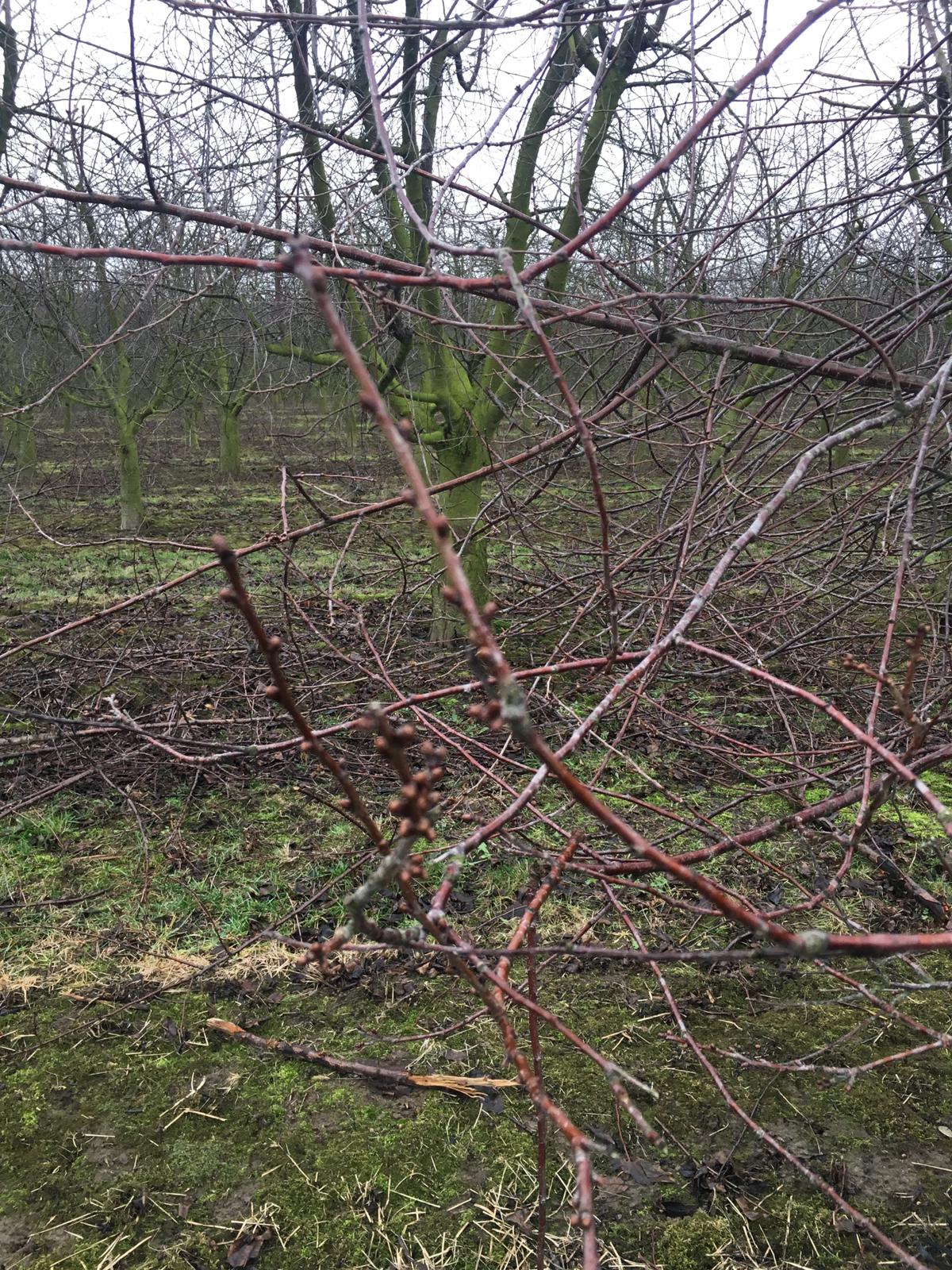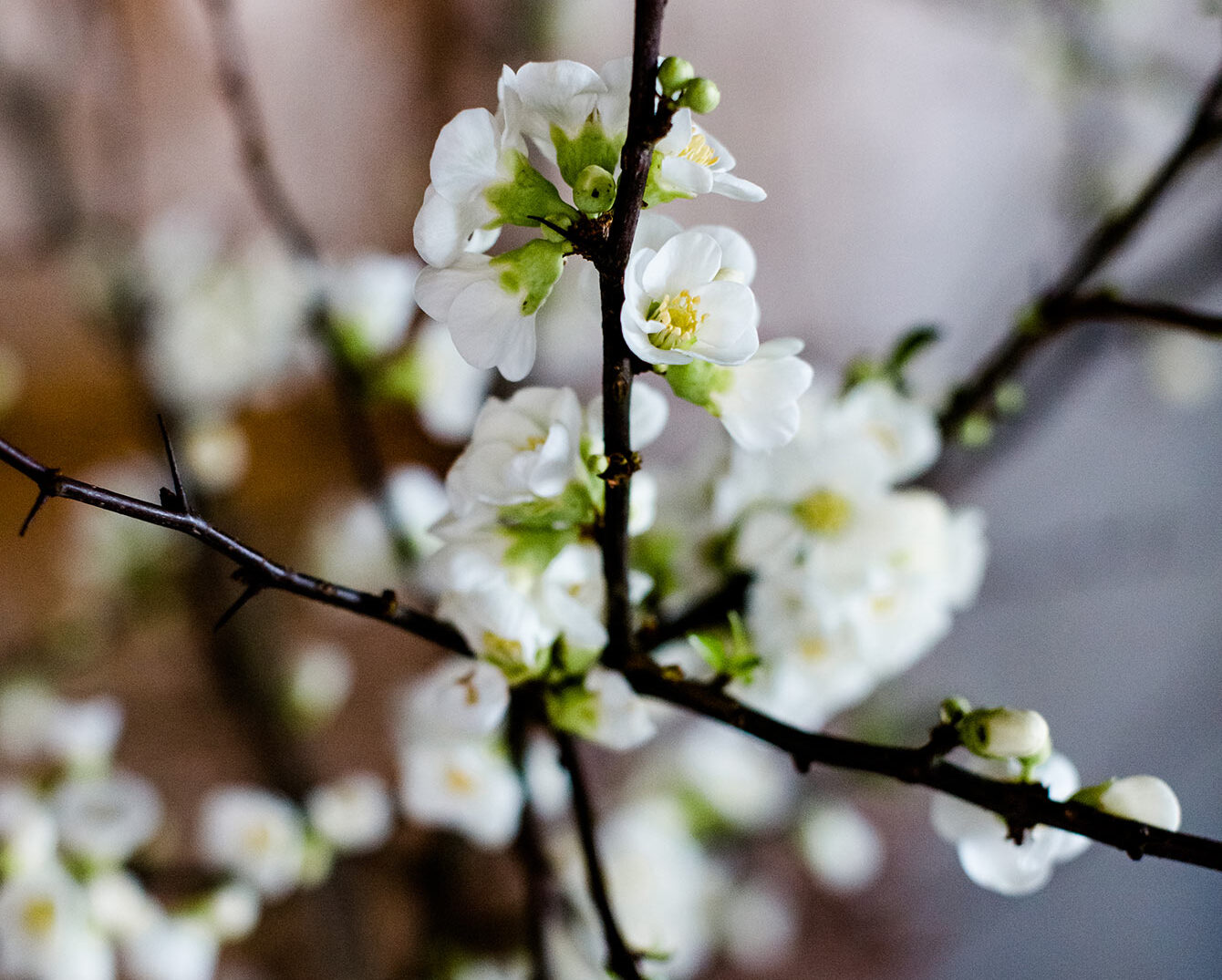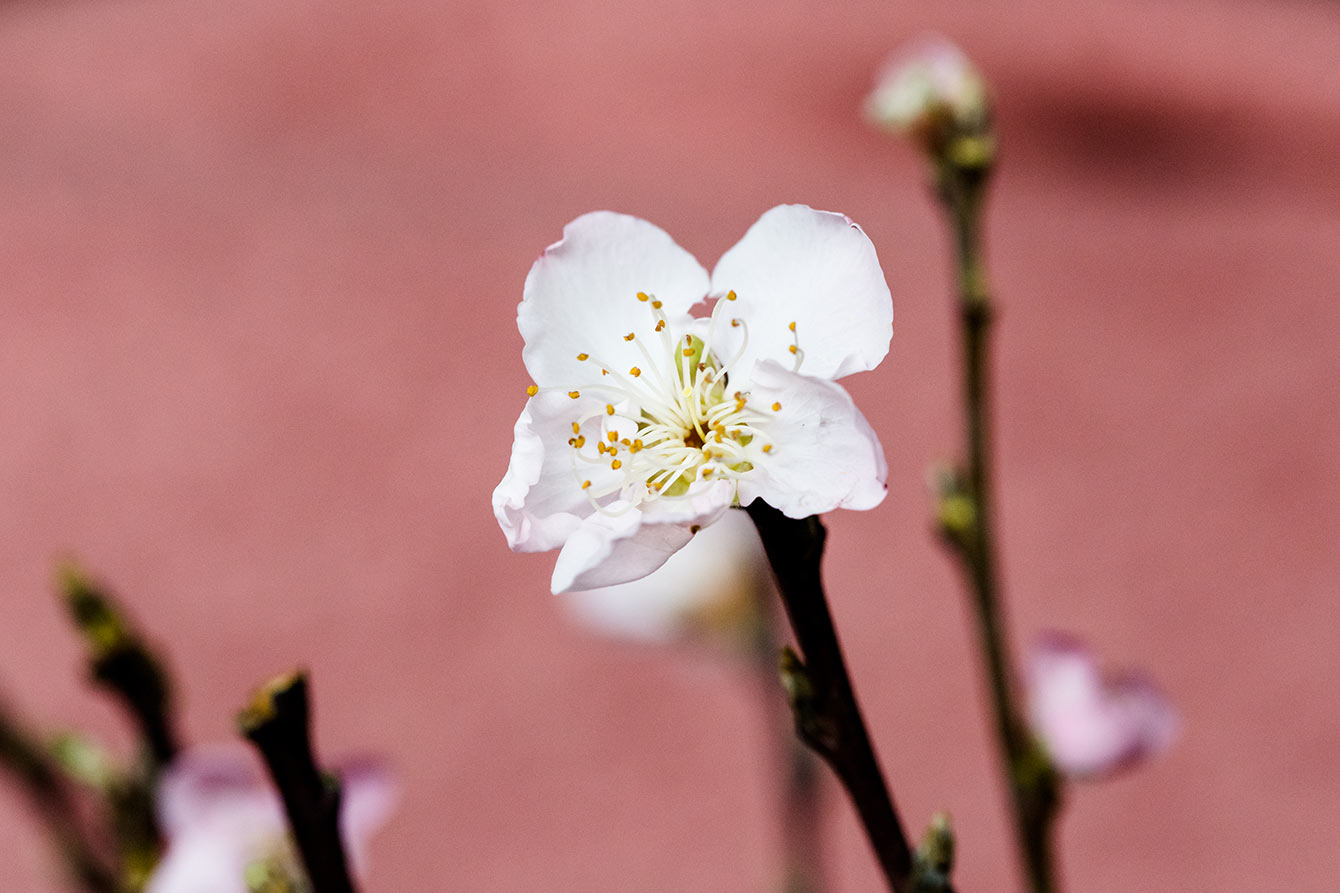Not only does cherry blossom bring spring directly into the house, but these white spring branches are also good for nature. Thanks to pruning the cherry blossom, the tree gets more sun, and more cherries will grow on it. Seasoned grower Piet talks about the influence nature has on this beautiful product.
Pruning to grow
“Cherry blossom is a pruning waste product. This means that the tree is grown for the fruit only. To ensure that the tree grows every year and gives delicious cherries, the grower must prune it annually in a certain shape. The first year the tree grows in length but does not bear any fruit.
The cherry blossom branches give blossom every year, but not fruit every year. The tree will give fruit on wood and branches two years of age, so when you’re pruning you have to cut off the annual fruit so that you keep the other branches for the fruit. When it’s time to do this, I go to the orchard to prune.”
Living with nature
“Pruning always takes place between mid-December and before easter. The weather plays an important role in this. The growth of the bud depends on the temperature. When it freezes and snow doesn’t melt in December, the bud grows less rapidly than when weather forecasts predict 18 degrees for a couple of weeks in March. We depend on nature. After easter, the pruning season is over and we give the tree time and space so the buds can bloom and the fruits can grow. For the cross-pollination of the blossom beehives and bumblebee hives are kept close.”
Pre-drawn flowers
“After pruning, the cherry blossom is ‘pre-pulled’. This is a heat process. After pruning we make bushes from the branches. We put these in water together with high air humidity, which creates a bud in the branch. When the blossoms are pruned before December 21st – the shortest day of the year – the flowering process comes to a standstill and the bud grows slowly. The closer the pruning happens on December 21st, the easier it becomes to spawn a bud on it. From mid-December to mid-January it takes ten days to spawn a bud in it. From mid-January to mid-February it takes five days and after that, it only takes three days. This is something nature manages, and it’s always interesting to see.”





